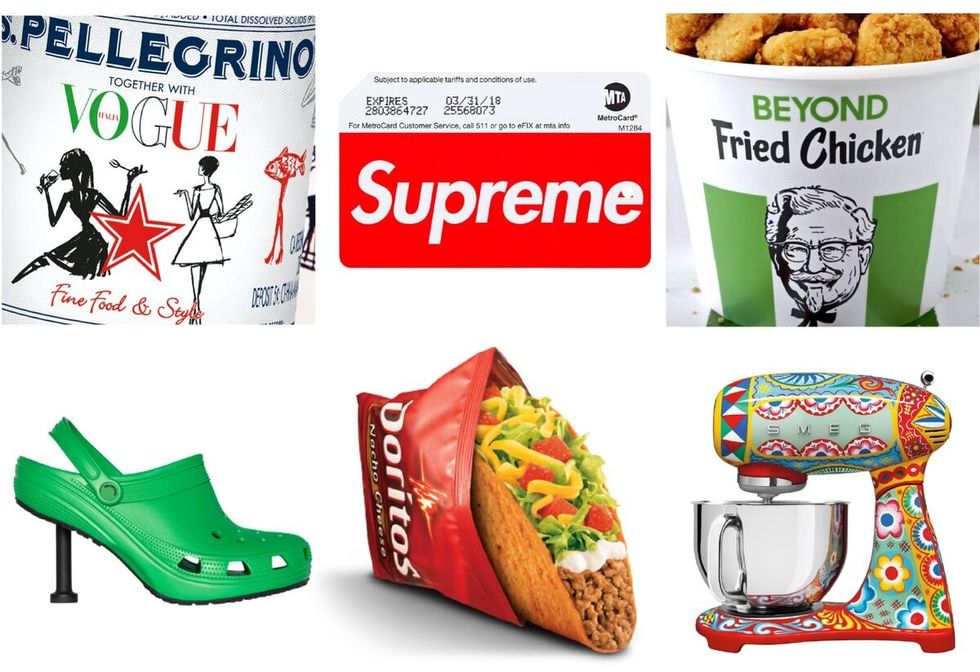
Brands and businesses are intertwined entities, mutually influencing each other's value. They represent two sides of the same coin. Among brands, we can broadly categorize them as leaders, followers, and challengers. Our focus here lies on challenger brands—businesses that fearlessly compete against established players, aiming to disrupt the market and redefine consumer perceptions. Their mission is to challenge conventional notions and reshape consumers’ hearts and minds.
In this article, we will explore the essence of challenger brands, effective strategies to build credibility and trust, essential guidelines for navigating potential pitfalls, seizing market share through digital marketing, and the transformative power of collaboration. Join us as we delve into the world of these audacious brands that dare to challenge the status quo and forge a unique path to success.
Challenger vs. Established: Defining Brand Differences
A challenger brand is a company or product that competes in a market dominated by established and well-known brands. It typically faces the challenge of breaking through market barriers and gaining market share from dominant brands.
Traditionally, challenger brands like Pepsi vs. Coca-Cola in the Cola Wars went head-to-head with competitors. Today, they transcend competition by challenging the status quo, consumer behaviors, and deeply held beliefs.
They fearlessly initiate confrontations, take firm positions, and write rules, redefining the game entirely. By differentiating themselves and targeting niche markets, they engage customers in compelling and unconventional ways. Operating with limited resources compared to established counterparts, challenger brands find creative ways to compete effectively and leave their mark.
Here are some defining characteristics of challenger brands and how they differ from established brands:
- Market Position: Challenger brands operate as underdogs, seeking to disrupt the status quo and challenge the market leaders. They aim to position themselves as an alternative to the established brand by offering unique value propositions or addressing specific customer needs that the incumbents may overlook.
- Limited Resources: Challenger brands often have limited financial resources, smaller budgets, and narrower brand recognition than established brands. They must be resourceful and find creative ways to impact the market, often relying on innovative strategies, guerrilla marketing, and word-of-mouth to gain traction.
- Differentiation: To stand out in a crowded market, challenger brands differentiate themselves by offering something unique or innovative. They emphasize their points of differentiation, whether it’s through product features, pricing, customer service, or brand values. By highlighting what sets them apart, challenger brands strive to attract consumers seeking alternatives to the established options.
- Nimbleness and Agility: Unlike established brands, challenger brands have the advantage of being more agile and flexible in their decision-making and execution. They can quickly adapt to changing market dynamics, consumer trends, and emerging technologies. This agility allows them to respond faster to customer needs, seize opportunities, and create disruption in the market.
- Customer-Centric Approach: Challenger brands prioritize understanding and catering to the needs of their target consumers. They listen to customers’ feedback, actively engage with their audience, and offer personalized experiences. Challengers can develop a loyal customer base by strongly emphasizing customer satisfaction and building relationships.
Building Credibility & Trust: Strategies For Challenger Brands

Photo Credit: LinkedIn
There are two effective strategies for challenger brands to build credibility and trust with consumers who lean towards established brands.
- Deliver superior value - Consistently providing high-quality products or services that offer clear value beyond expectations is crucial. Challenger brands establish reliability and customer satisfaction by exceeding customer expectations and delivering exceptional experiences.
- Identify pain points and offer innovative solutions - Understanding the pain points consumers face with established brands and providing innovative solutions can earn credibility. By addressing unmet needs and offering a fresh approach, challenger brands can attract customers seeking alternatives.
Dollar Shave Club revolutionized the razor industry dominated by Gillette. A low-budget, "Our Blades Are F*cking Great" video campaign, reportedly shot for a mere $4,500, went viral. With a direct-to-consumer model, the brand challenged the status quo of existing brands and buyer behavior. They gained attention and disrupted the market by cutting out middlemen and delivering quality blades. Eventually, the brand was acquired by Unilever for $1 billion in 2016.
Navigating Pitfalls: Challenger Brand Strategy

Photo Credit: Sage Journals
The challenger brands should avoid the following pitfalls while taking the market head-on.
Lack of Differentiation: Without a truly differentiated product or offering that provides a better alternative to what’s already available, attempting to position oneself as a challenger brand will likely backfire. It’s crucial to develop strategies around a unique value proposition that sets the brand apart and resonates with consumers.
Copying Established Brands: Emulating the market leader or established brands can lead to blending in with the existing competition, resulting in a lack of distinction. Challenger brands should strive to carve out their identity and avoid the “sea of sameness.” It’s crucial to forge your path and create a unique identity to succeed.
Lack of Innovation: Failing to continuously innovate poses a potential threat to the brand’s success. Challenger brands should constantly seek new ways to differentiate themselves, improve their offerings, and stay ahead of changing consumer preferences and market trends.
Pricing Wars: Competing solely on price can be detrimental to long-term success. Instead, challenger brands should focus on value and differentiation.
Neglecting Brand Building: Not investing in building a strong brand positioning, identity, messaging, and customer experience to establish credibility will not help the brand get registered among the target audience.
Challenger brands should embrace their underdog status. By embodying the “David against Goliath” attitude, they should offer a more personal, authentic, and relatable experience compared to the corporate image of established brands.
Unleashing Digital Power: Challengers Stealing Market Share

Photo Credit: Shutterstock, Detik Finance
Challenger brands leverage digital marketing and social media to raise brand awareness and steal market share from larger competitors through nimbleness, agility, and innovation. They can employ two major strategies: content marketing and guerrilla/viral marketing.
Let’s look at an example of this. Kind Snacks disrupted the snack industry by offering healthier options made with whole ingredients and no artificial flavors, preservatives, or excessive sugars. This focus challenged industry norms or processed snacks.
Kind Snacks gained market share by appealing to health-conscious consumers and carved out a niche. Leveraging content marketing through blogs, articles, social media, and influencer partnerships, the brand engages its audience, builds loyalty, and positions itself as a trusted resource for healthier snacking.
Through contrarian thinking, Kind Snacks differentiates itself from larger, less health-oriented brands.
Power Of Collaboration: Boosting Visibility For Challengers

Photo Credit: Bloomberg
In the competitive landscape, challenger brands can gain a significant advantage by strategically forming partnerships and collaborations. By joining forces with complementary brands, industry influencers, or even non-competitors, challenger brands can enhance their visibility and credibility in the market. Collaboration opens doors to new audiences, extends reach, and strengthens brand positioning.
First, partnerships provide challenger brands access to established networks and customer bases. By teaming up with well-known brands or influencers, challengers can tap into their existing audience and gain exposure to a larger pool of potential customers. This exposure can result in increased brand awareness and accelerated market entry. Additionally, collaborations with industry influencers or thought leaders lend credibility and trust to challenger brands as they leverage the influencer’s established reputation and expertise. This association can help overcome consumers’ skepticism towards lesser-known brands, boosting credibility and fostering a positive perception among the target audience.
Second, collaborations allow challenger brands to leverage shared resources, expertise, and creativity. By partnering with other companies, challengers can combine strengths and fill gaps in their capabilities. This can result in innovative product development, impactful marketing campaigns, and enhanced customer experiences. Joint marketing efforts, co-branded campaigns, or collaborative content creation can generate buzz, capturing consumers’ attention who may have been more inclined toward established competitors. Moreover, collaborations demonstrate a willingness to think outside the box and foster innovation, positioning the challenger brand as a dynamic and forward-thinking player in the industry.
In conclusion, challenger brands boldly disrupt established markets by offering unique value propositions and targeting niche markets, challenging consumer perceptions and reshaping the industry. Building credibility and trust is crucial for these brands, achieved through consistently delivering superior value and innovative solutions to address consumer pain points. To steal market share from larger competitors, challenger brands can leverage digital marketing, content strategies, and partnerships to raise brand awareness, engage with audiences, and access established networks. By embracing their underdog status and driving innovation, challenger brands have the potential to make a lasting impact, carving out their niche and stealing the thunder from established competitors.
For a step-by-step guide on how to develop a brand strategy, check out How to Develop a Brand Strategy by Lisa Perry.
Anand is a co-founder of TMA Global—a brand strategy studio. He helps brands find their purpose and get people to care about it. His mission is to turn businesses into beloved brands. Check out some of his guides here.
For more brand marketing insights, follow Anand Sankaranarayanan and Lisa Perry.
This article was written by Lisa Perry and Anand Sankaranarayanan.
- Space Marketing: It's Time To Plan Your Brand's Future ›
- Why A Brand Architecture Matters ›
- Emotional Branding: Marketing To The Heart ›
- The Importance Of Branding For Your Business ›
- Overstimulated Branding: The New Trend That’s Capturing Consumers' Attention ›
- Why Purpose-Driven Brands Are Successful ›
- How To Achieve Successful Strategic Partnerships - Work It Daily ›
- The Lean Startup Marketing Formula - Work It Daily ›

 Bigstock
Bigstock Bigstock
Bigstock Bigstock
Bigstock


